How To Treat, Control And Get Rid Of Fungus Gnats Outside Naturally
The first and foremost important step you need to take is to keep the soil free from excess moisture. If you still get an infestation, use a safe insecticide, neem oil, or sticky traps to get rid of gnats.
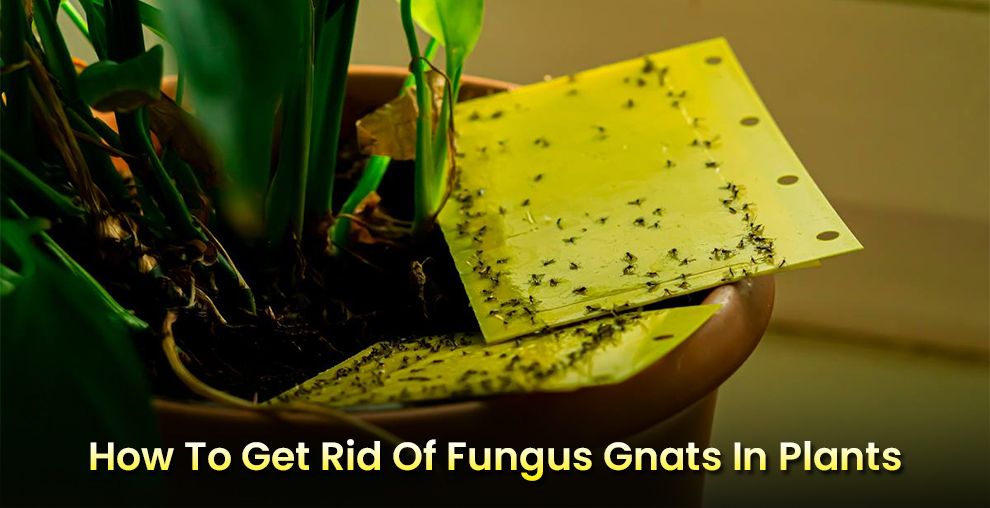
The tiny black flies you see buzzing around the indoor plants that get on to your nerves, well, those are the fungus gnats. Sadly, there is nothing fun and exciting about them.
Also, eliminating the gnats can be a real challenge, but not so much if you know research well in advance how to get rid of fungus gnats in plants.
Some beneficial tips can help you banish these annoying little bugs. Letting your potting soil dry out, employing a mixture of water and hydrogen peroxide, using a biological control agent, adding insecticides to the potting mix are some of the ways to keep gnats in check.
You may also try using yellow sticky cards to trap and attract fungus gnats, and repotting the plant.
Fungus gnats look much like fruit flies. However, the good news is they are not very harmful compared to the other pests but can be unsightly. Thus, you must try on working how to eliminate fungus gnats as early as possible. Read below as we discuss the different methods.
What Are Fungus Gnats?
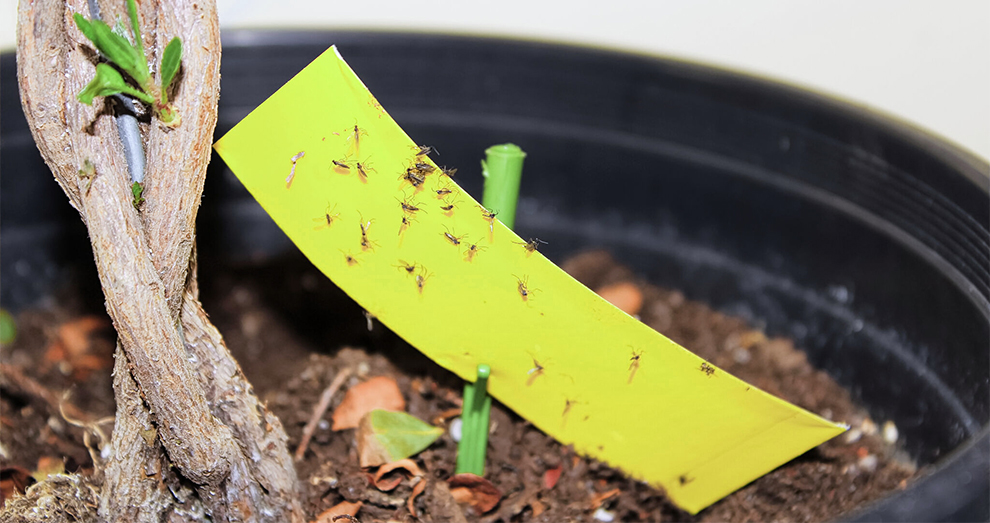
Fungus gnats are dark-colored, small insects from the Sciaridae family. They are found in potting mix or damp soil, where they feed onto the decaying organic matter, fungi, and plant roots. Adult fungus gnats are approximately 1/8 inch and have delicate, little wings and long legs with fine hairs.
They are primarily not harmful to the plants, but their larvae might inflict some damage by feeding on the roots of the young plants, resulting in wilting or stunted growth.
In some extreme cases, it might also lead to plant death. Furthermore, the adult fungus gnats may also be a nuisance around the home as they are attracted to light. So, you will spot them all around the indoor light fixtures or plants. Hence, it becomes crucial for you to know how to get rid of fungus gnats in plants.
What Causes Fungus Gnats?
Typically gnats are present in organic-rich, damp environments, such as poorly drained or overwatered soil, compost piles, or potting mix. The larvae of the gnats feed onto the organic matter, including the roots, and are allured by the areas where the organic material and moisture are in abundance.
Overwatering the plants is one of the most prevalent causes of fungus gnats. When the soil is consistently moist, it forms a conducive environment for the fungus gnats to breed and lay eggs.
Beyond overwatering, lack of air circulation and poor drainage can also be the reason for fungus gnats infestations.
Contaminated compost or potting soil is another cause of fungus gnats. If the compost or soil has fungus gnat eggs or larvae, they can quickly multiply and infest the plants. The fungus gnats may enter the greenhouse or house from outside sources, such as clothing, plant material, or contaminated soil.
Thus to avoid fungus gnats, you must ensure proper drainage, avoid overwatering, use uncontaminated and clean compost or coil, and have better air circulation. Regularly check on your plants for infestation signs to prevent the spread of fungus gnats.
Are Fungus Gnats Harmful?
Though considered nuisance pets, fungus gnats are not harmful to humans. But they can harm the plants, particularly the seedlings, by feeding on the roots, resulting in stunted growth.
The fungus gnats’ larvae attract other pests like thrips and spider mites and induce further damage to the plants. However, the fungus gnats can be a nuisance beyond damaging the plants as they are attracted to the light and fly around potted plants and fixtures.
Some people are also allergic to fungus gnat bites, but this is rare.
How To Prevent Fungus Gnats?
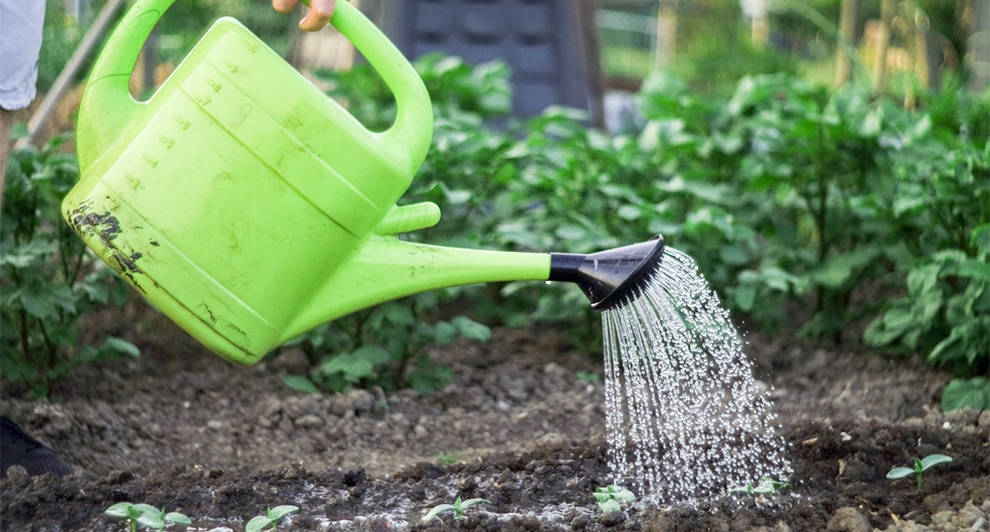
Before we discuss how to get rid of fungus gnats outside and indoors, you must also know some ways to prevent the infestation because what better cure than prevention? Here are some tips to prevent gnats from infesting and damaging your plants:
1. Let the soil dry between two waterings: One of the reasons for fungus gnat infestation is overwatering. Thus, let the soil dry out before you water it again. You can use a moisture meter or stick a finger into the soil to assess the soil’s dampness.
2. Use clean soil: Employing top-grade, fresh potting soil free of fungus gnats and their eggs can also help prevent infestation. You must not reuse the old soil or add used garden soil to your plant.
3. Keep the environment dry: Fungus gnats love moist environments. So, take measures to improve air circulation and ventilation around the plants. Further, do not over-humidify your greenhouse or home.
4. Keep the environment clean: Remove the dead plant material regularly, and do not leave the organic matter, such as compost or leaves, in containers or pots.
5. Introduce beneficial nematodes: These are worm-like, microscopic organisms that feed on the fungus gnat larvae. These are available for purchase from your local nursery and can be added to the soil to control the fungus gnats population.
6. Improve drainage: The employed container or pot must have adequate drainage holes to drain the excess water. The fungus gnats lay eggs and thrive when the soil is too wet.
How To Treat Fungus Gnats?
If your preventive measures do not work, take remedial actions to treat the fungus gnats. Here are some methods that work:
A. Sticky Traps
It is an effective and straightforward method to keep fungus gnats in check. Here are the steps to learn how to trap fungus gnats:
- Buy yellow sticky traps from an online retailer or a garden center. These traps have a sticky substance coating that traps and attracts flying insects, including the fungus gnats.
- Hang the traps at the plant level by using the toothpicks or attaching them to the small stakes and inserting them into the soil.
- Place the traps near the affected plants and where you spot the gnats flying around.
- Regularly check the traps and replace them when they are dirty or covered in insects. Also, ensure the traps remain effective in catching the fungus gnats.
B. Insecticides
Many homeowners wish to overcome the problem of fungus gnats at the earliest. So, they use insecticides. You must employ different insecticides for the larvae and the adults as they respond differently to the treatment.
Since new adults are born onto the potting soil surface, apply the insecticide to the soil’s surface. Do not spray the insecticide onto the plants as the gnats infest the roots’ heads, soil, and the algae inside the soil.
Of course, you can opt for natural or mild alternatives like dish soap or neem oil, but they are not as effective as the commercial options.
Thus, if you seek reliable and highly-effective insecticides to eliminate the gnats immediately and for a long, opt for products that contain lambda-cyhalothrin, bifenthrin, permethrin, and cyfluthrin.
C. Diatomaceous Earth (DE)
It is a fine powder made from the fossilized remains of diatoms, a type of hard-shelled algae. People use it as a natural pest control because it is abrasive and can damage the insects’ exoskeletons.
For using DE for fungus gnats, sprinkle a thin layer of this powder onto the soil surface and mix it into the soil’s top layer. When larvae come in contact with the DE, it damages their exoskeletons, resulting in dehydration and death.
Please remember that DE can be harmful if inhaled, so please use it cautiously. Use a mask when applying and handling DE, and do not overapply the powder, as it might become airborne.
Sadly, DE alone might not be 100% effective in controlling fungus gnats, especially when the infestation is large. Thus, employ it with other methods, such as reducing moisture levels and improving soil drainage.
D. How To Deal With Fungus Gnats With Neem Oil
use natural insecticides like neem oil to track the fungus gnats. It is derived from neem tree seeds and is employed as a fungicide and pesticide in organic gardening since it helps control various pests and diseases.
You can buy a readymade neem oil spray or prepare one yourself. To use neem oil for fungus gnats, dilute the oil with water in the proportion stated by the manufacturer on the label and spray the soil onto the foliage and the soil surface of the affected plant.
Neem oil works well by disrupting the insect larvae’s development and growth and preventing them from reproducing and maturing. You can use the neem oil to control diseases and pests on the plants or soil.
Please note neem oil can be harmful if ingested. Thus, you must keep it away the children and pets away from the treated area until the soil has dried. Further, neem oil can leave a residue on the foliage. So, do not spray it during dry sunlight or high heat, as that can burn the plant.
E. Pyrethrin Spray
Pyrethrin spray is a natural insecticide extracted from the chrysanthemum flowers. It is often employed as a pesticide in organic gardening because it helps control various pests, such as fungus gnats.
You can apply it to the foliage and the soil surface of the affected plant to control its spread. Pyrethrin spray targets the insects’ nervous system, resulting in paralysis and death.
This insecticide is safe for pets and humans but can harm beneficial insects, such as butterflies and bees, aquatic organisms, and fish. However, read the manufacturer’s instructions for not overapplying the spray.
Further, the pyrethrin spray can also help control fungus gnat larvae that live in the soil and do not come in contact with the spray. For best results, you can use it in combination with other methods.
F. Beneficial Nematodes
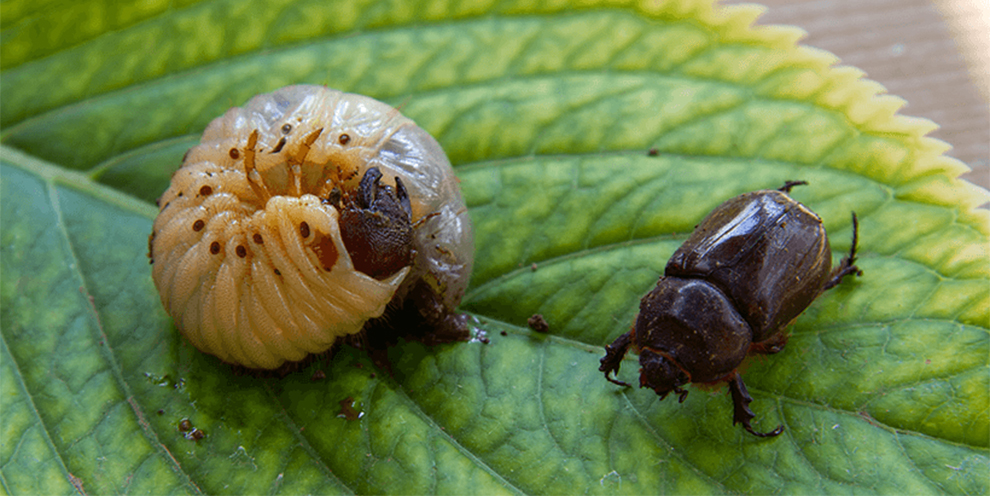
The beneficial nematodes are an effective method to keep fungus gnats in check, especially in potted plants. These are worm-like, microscopic organisms that prey on insects like fungus gnat larvae.
They live in the soil. Here are the steps you can follow to employ beneficial nematodes for fungus gnats:
- Shop for the nematodes from an online retailer or garden center. Pick a specie that is effective against fungus gnats.
- Follow the instructions on the package to prepare the nematodes for application. It involves mixing the nematodes with water and applying the solution to the affected plants’ soil.
- Water thoroughly after application to distribute them across the soil.
- Repeat the nematode application following the instructions on the label.
Beneficial nematodes have a limited lifespan. So, you will have to apply multiple times to control the infestation.
G. Soapy water
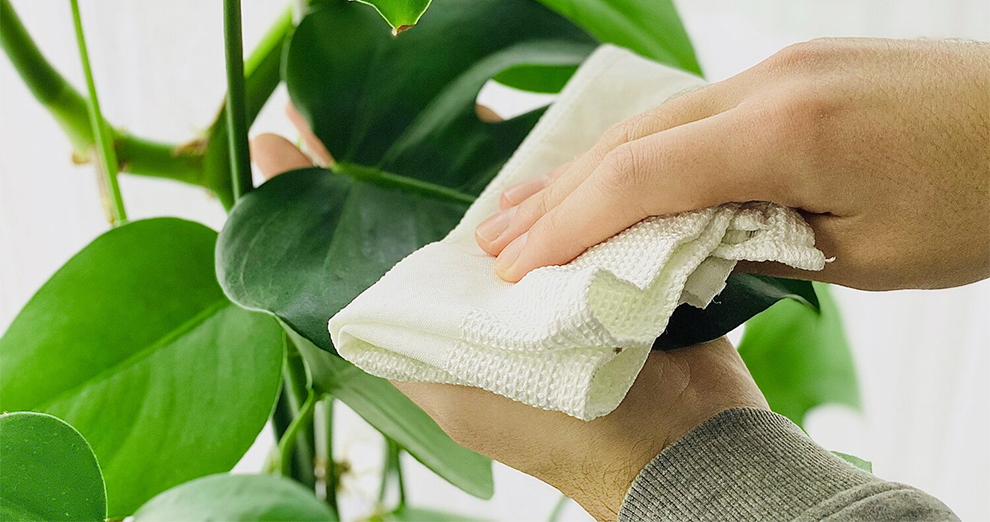
Soapy water can be an inexpensive but beneficial method to control fungus gnats in potted plants. The soap breaks the water’s surface tension, drowning the adult gnats and the larvae.
Here are the steps you must follow to employ soapy water for fungus gnats:
- Take a few drops of dish soap. The amount of soap you need depends on the type and brand, but, in general, 2-3 drops for every cup will suffice.
- Mix the soap into a small water container.
- Add a tablespoon of sugar to attract the gnats.
- Place this soapy water container near the affected plants or where you see the gnats flying around.
- Regularly check the container and replace the soapy water as needed. As the gnats drown in this water, the water becomes cloudy.
H. Use Scents To Repel Them
Several scents can help repel fungus gnats from your potted plants. Some such scents include:
1. Lemon juice – The acidic scent of lemon juice repels the fungus gnats. So mix some juice with water and spray it onto the soil and around the plants to keep fungus gnats’ at bay.
2. Peppermint oil – The peppermint oil scent also repels the fungus gnats. So, add 2-3 drops of the oil in a spray bottle, fill it with water, and spray it onto the plants.
3. Lavender – Lavender scent can also help keep fungus gnats’ at bay. Add a few drops of lavender essential oil to the spray bottle filled with water, and spray it around the plants’ soil.
4. Cinnamon – Cinnamon also has a scent that can repel the fungus gnats. Sprinkle ground cinnamon around the soil or place a cinnamon stick inside the soil to keep fungus away.
Please note these are temporary relief techniques, so you must simultaneously employ other methods on how to get rid of fungus gnats naturally to tackle the root cause of infestation.
Does Hydrogen Peroxide Kill Gnats Or Harms The Plants?
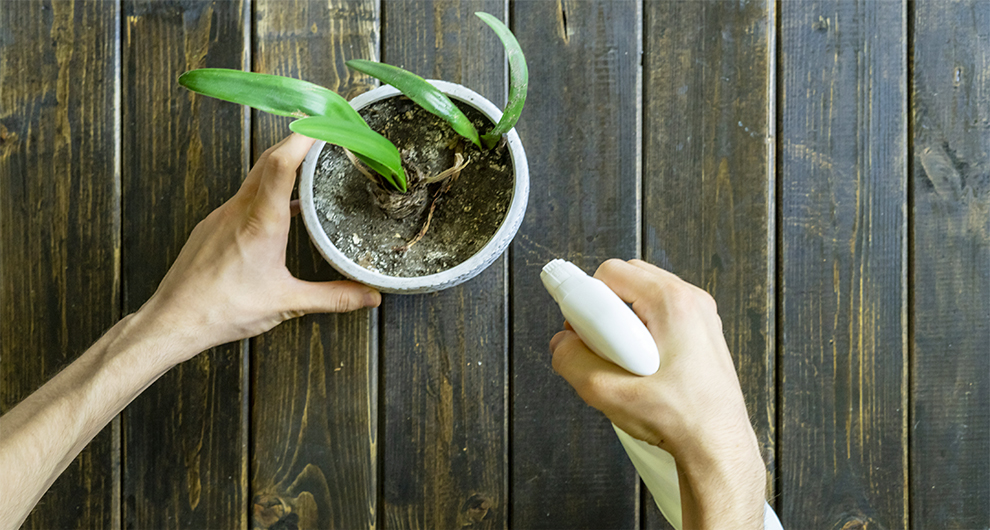
Hydrogen peroxide can help control fungus gnats and other soil-borne pests in potted plants. However, use it with caution to ensure you do not harm the plant.
In small doses, hydrogen peroxide can be beneficial as it will break down into oxygen and water, killing harmful fungi and bacteria and simultaneously aerating the soil.
Here are the tips for using hydrogen peroxide for potted plants:
- Take a three percent hydrogen peroxide solution to control fungus gnats. Mix 1 part hydrogen peroxide with four parts water for a .75 percent solution.
- Water the plants with this solution by saturating the soil evenly. It will kill fungus gnats’ larvae and other soil-borne pests.
- Closely inspect the plants for signs of stress or damage. Stop using hydrogen peroxide solution instantly if the plant shows any damage signs, like yellowing leaves or wilting.
Please note hydrogen peroxide in high concentrations can harm the plants, especially if it comes in contact with the foliage. So, be judicious.
Other Infestation Problems: Goat Heads | Scales on Plants | Leafhoppers | Aphids
How Do Indoor Plants Get Fungus Gnats?
Indoor plants can get fungus gnats from various sources. These include:
1. Contaminated soil: Fungus loves damp soil. So, soil with poor drainage or overwatered soil gives the fungus a perfect breeding ground. The fungus gnats’ larvae can also feed on the organic matter introduced into the soil. Hence, contaminated soil can infest fungus in indoor plants.
2. Open doors and windows: Fungus gnats may fly into your home through the open doors or windows, especially if you reside in an area with vast gnats population.
3. Infested plant material: Infusing the infested plant material or bringing infested plants indoors can also introduce fungus gnats into your indoor plants. If you buy cuttings or plants from a garden center or nursery, thoroughly inspect them to check for signs of fungus before bringing them home.
4. Pets: Your dogs and cats might also bring fungus gnats into the home via their fur.
How To Control Fungus Gnats Indoors?
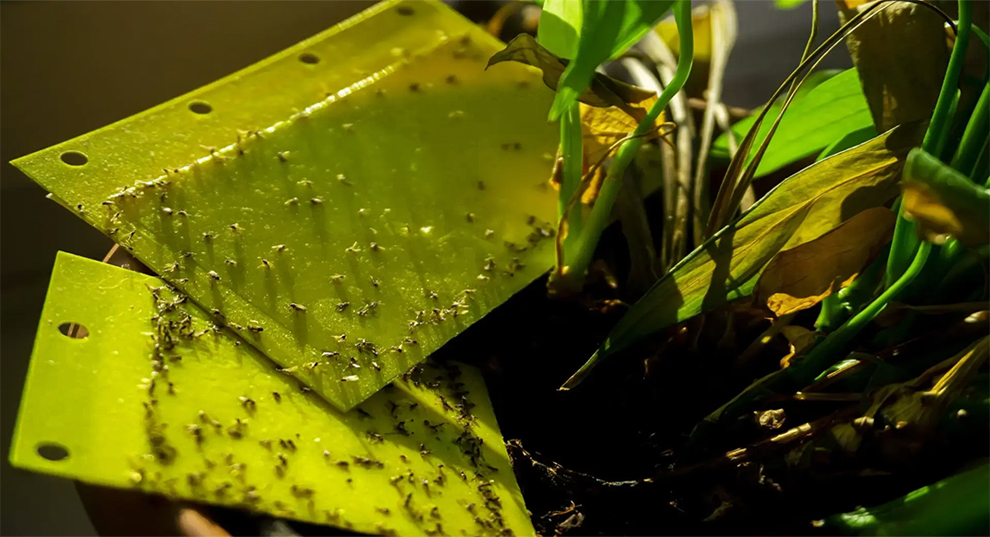
Here are some effective methods to control fungus gnats indoors on houseplants:
- Reduce the water frequency as fungus gnats thrive in moist soil and water only when the top soil feels dry.
- Ensure the potted plants have adequate drainage to ensure the water does not sit at the bottom of the pot.
- Using beneficial nematodes, insecticidal soap, hydrogen peroxide, and sticky traps can also help kill the fungus gnats larvae.
- When the infestation is severe, consider repotting the plant in fresh soil.
How To Get Rid Of Fungus Gnats In Soil?
To get rid of the fungus gnats in the soil, use one or a combination of the following methods:
- Keep the soil dry.
- Use beneficial nematodes to kill active larvae of fungus gnats.
- Place sticky traps near the plant to trap adult fungus gnats.
- Employ insecticidal soap to kill larvae in the soil.
- Use diluted hydrogen peroxide solution to kill the larvae in the soil.
- Repot the plant if the infestation is severe.
How Long Does Soil Have To Be Dry To Kill Fungus Gnats?
Your soil must be dry throughout to kill and keep the fungus gnats’ away.
Can You Have Fungus Gnats In A House With No Plants?
It is unlikely to have fungus gnat infestation in the house sans any plants as these insects feed on the organic matter in the soil and thrive in moist conditions. But at times, the fungus may enter the soil from outside, as it can be attracted to damp areas like crawl spaces or basements.
Hence, if you have a fungus gnat infestation without any indoor plants, it is likely that they are coming from an external source.
You can eliminate this infestation by identifying the damp areas in your house and immediately take measures to lower the moisture by incorporating steps like improving ventilation, installing a humidifier, or fixing leaks.
Using sticky traps to catch adult gnats can also be beneficial. If the infestation persists, contact a pest control professional to examine the source and devise a POA.
